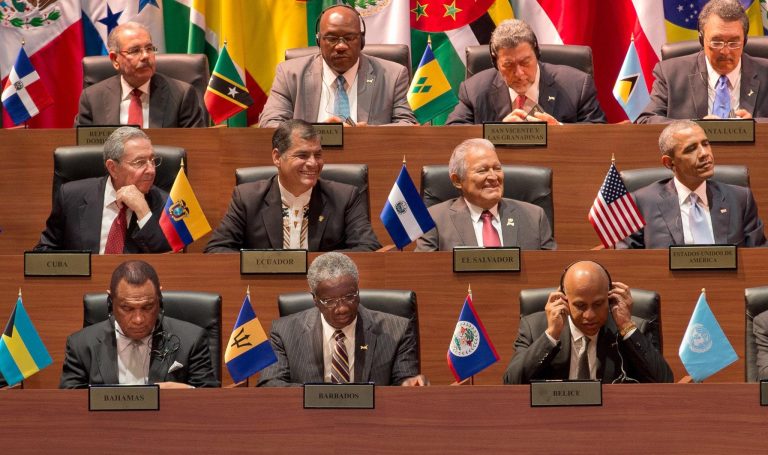Latin America’s political map is being rapidly redrawn as voters, strained by inflation, insecurity, and uneven recoveries, swing between outsider insurgents and establishment-backed coalitions from Mexico to the Southern Cone. Recent ballots have delivered sharp contrasts-Argentina’s libertarian shock therapy, Brazil’s renewed center-left under Lula da Silva, Mexico’s continuity under a progressive mantle, and El Salvador’s hard-line security consolidation-producing a patchwork of mandates and uneasy coalitions.
The churn is reshaping foreign alignments and domestic priorities alike, from resource nationalism over oil and lithium to negotiations with the IMF, Washington, and Beijing. It is also testing institutions through anti-corruption drives, constitutional rewrites, and mounting street pressure. As new leaders take office and incumbents recalibrate, the region confronts a central question: can volatile politics deliver the stability and reforms citizens demand?
Table of Contents
- Populist Gains and Fiscal Pressures Reorder Voter Priorities From Mexico to Argentina
- Nearshoring Reshapes Trade and Jobs as China Ties Deepen and Governments Prioritize Infrastructure Permits and Tax Certainty
- Security and Migration Strains Remake Alliances and Call for Coordinated Border Management Shared Intelligence and Justice Reform
- Key Takeaways
Populist Gains and Fiscal Pressures Reorder Voter Priorities From Mexico to Argentina
From Mexico City to Buenos Aires, anti-establishment contenders are translating discontent into votes while colliding with shrinking budgets, sticky inflation, and IMF-linked discipline, shifting campaigns from sweeping promises to costed agendas that prioritize stability, targeted relief, and crime reduction; markets reward moderation, but voters want results fast, forcing negotiators to price every pledge against limited fiscal space and rising social demands.
- Mexico: Security-led platforms pair with selective cash transfers as Pemex liabilities and post-pandemic spending squeeze room for new subsidies.
- Argentina: Dollarization talk cools into staged stabilization; subsidy rollbacks and wage pressures keep debt spreads jumpy and reserves fragile.
- Brazil: Social floors meet a revamped fiscal rule; tax reform advances, but carveouts test the credibility of the new spending cap.
- Chile: Constitutional fatigue redirects energy to pensions, crime, and growth, narrowing appetite for broad tax hikes.
- Colombia: Reform ambitions shrink as oil receipts soften and a weaker peso fuels imported inflation.
- Peru: Political turnover channels demands for regional investment; mining faces tighter royalty debates and social licensing risks.
- Central America: Security-first mandates win approval, but remittance dependence and food prices constrain policy choices.
Nearshoring Reshapes Trade and Jobs as China Ties Deepen and Governments Prioritize Infrastructure Permits and Tax Certainty
With factories and service hubs shifting closer to U.S. demand, Latin America is capturing investment once headed to Asia even as Beijing expands financing and supply-chain partnerships; administrations from Mexico to Brazil are accelerating infrastructure approvals and pledging tax certainty to anchor multi-year projects, while unions and SMEs navigate wage pressures and productivity upgrades as automotive, electronics, and pharma recast procurement under geopolitical strain.
- Trade flows: Northbound shipments from Mexico and Central America hit new highs, diversifying baskets beyond hydrocarbons and metals.
- Jobs: Emerging clusters in border and secondary cities add formal roles but expose gaps in mechatronics, logistics, and bilingual support.
- China linkages: Co-investment in batteries, solar, and EV components deepens input reliance, testing security reviews and rules-of-origin.
- Policy pivots: One-stop permit windows, CAPEX incentives, and multi-year tax rulings target investor predictability amid volatile politics.
- Risks: Port congestion, grid constraints, water scarcity, and fragmented customs procedures threaten to dilute the nearshoring dividend.
Security and Migration Strains Remake Alliances and Call for Coordinated Border Management Shared Intelligence and Justice Reform
Amid record flows through the Darién Gap, gang-driven violence, and the spread of transnational smuggling networks, governments from the Andes to the Southern Cone are recalibrating priorities and forging pragmatic alignments that cut across ideology-pairing tougher controls with humanitarian protocols, deepening cross-border policing, and accelerating border management, shared intelligence, and justice reform to blunt criminal revenues and stabilize migration routes.
- Coordinated border management: joint patrols at chokepoints, synchronized checkpoint hours, and interoperable traveler and cargo risk screening to disrupt smuggling corridors without paralyzing trade.
- Shared intelligence: fusion cells linking police, migration, and customs agencies; real-time watchlists via Ameripol/Interpol channels; and financial-tracing teams targeting human-trafficking profits.
- Justice reform: expedited extradition paths for high-value suspects, anti-corruption vetting in border forces, strengthened forensic labs, and protected-witness programs to secure convictions.
- Humanitarian safeguards: coordinated reception sites, standardized vulnerability screening, and asylum processing that honors non-refoulement while deterring repeat smuggling attempts.
- Accountability and tech: body-worn cameras at crossings, tamper-proof chain-of-custody for evidence, and public dashboards on encounters and outcomes to rebuild trust.
Key Takeaways
As ballots are counted and cabinets reshuffled, Latin America’s political map remains in flux, shaped by economic strain, public security concerns, and anti-establishment sentiment. Fragmented legislatures and tight fiscal space are testing new leaders’ promises, while voters continue to weigh immediate relief against long-term reforms.
The next inflection points will arrive quickly: budget battles, coalition negotiations, and a fresh cycle of elections will signal whether campaign platforms can become workable policy. Markets will watch fiscal plans and debt talks; communities will judge security strategies and social spending; and foreign partners will parse the region’s stance on trade, migration, energy, and climate. For now, the only constant is volatility-and the question of whether governments can convert political momentum into durable governance will define the region’s next chapter.


